Es fühlt sich beinahe an wie eine andere Welt, als wir rechts auf die X-83 abbiegen – die Straße, die durch den Nationalpark Patagonien bis zur argentinischen Grenze führt. Die Abwesenheit der sonst präsenten kilometerlangen Zäune wird uns bereits in den ersten Metern bewusst. Ein Gefühl von Freiheit, und Zufriedenheit stellt sich ein. Im Rahmen der Nationalparkgründung wurden alleine hier über 590 km Zäune entfernt, um die Bewegung von Tieren nicht weiter einzuschränken. Heute bietet der Park ein 249 km langes Netz an Wanderwegen und ist ein echtes Paradies für Wanderfreund*Innen. Die 19,5 km lange Tageswanderung Lagunas Altas zählt dabei zu einer der beliebtesten Wanderrouten im Park. Dieser Artikel liefert detaillierte Informationen zur Wanderung Lagunas Altas, inklusive Wegbeschreibung, GPS-Daten sowie Tipps zur Anreise, Übernachtung und Verpflegung im Park.
Background on Patagonia National Park
Since 2018, the once private nature reserve has held the status of a national park. As part of the establishment of the national park, it was donated to the Chilean government in 2018. It is considered one of the most significant nature restoration projects in Chile. The Chacabuco Valley, once one of the largest livestock farms in the country, forms the heart of the park. The focus is on protecting various wildlife species such as pumas, condors, rheas, and the huemul (South Andean deer), which is considered endangered. Further information about the park can be found at Rewilding Chile a foundation dedicated to the restoration and conservation of biodiversity in Patagonia.
The park has an extensive network of hiking trails and campsites, as well as a visitor center. The 19.5 km long Lagunas Altas day hike is one of the most popular hiking routes in the park. This article provides detailed information on the Lagunas Altas hike, including a trail description, GPS data, and tips on getting there, accommodation, and food in the park.
Getting to the Park
The hike to the Lagunas Altas begins about 2 km from the park's visitor center. The international road X-83 runs through the park to the Passo Roballo at the Argentine border. This road will take you to the visitor center, where you can get information about various hikes in the park and pay the park entrance fee. Note that overnight stays at the campsites must also be paid for in cash here.
Park Entrance Fee: 11,000 Pesos (as of december 2023)
Kosten Camping: 8000 Pesos (as of december 2023)
Lagunas Altas Hike – Overview of Tour Data
Hike Length: 19.5 km (+ about 1.5 kilometers to get back to the starting point from the end of the hike)
Elevation Difference total: 780 m
Difficulty: Medium
Trail Conditions and Trail Signs: The trail is consistently good, well-marked, and includes kilometer markers.
Water: The water quality in the park is good. Opportunities to refill with fresh water are marked on the map.
Starting Point of the Lagunas Altas Hike
To reach the starting point of the hike, follow the signs from the visitor center towards Camping Los West Winds. You can begin the hike from two locations. The first starting point is about 500 meters past the visitor center, where there is a parking lot and a sign for the hike. The second possible start is just above the parking lot near Camping Los West Winds. Both are marked by a large sign that says "Sendero Laguna Altas."
Note that the hike is not a complete loop. You need to add the 1.5 kilometers between your chosen starting and ending points of the hike.
We start the hike at the parking lot above the campground. The following descriptions refer to the hike in this sequence.
Section 1: 8.3 kilometers ascent to Laguna Altas
In mostly gentle ascent, we hike the first 8 kilometers up to the plateau where our campground is located at the foot. The open terrain offers breathtaking views and invites you to linger at many spots.
According to the visitor center, this stretch is where you're most likely to spot pumas. We alternated between curious hope and respectful caution toward these big cats. In the end, perhaps it was better that we only found paw prints on the trail – silent witnesses of their presence. We can only speculate how many pumas might have been observing us from the surrounding bushes as we walked through their habitat on these 8 kilometers.
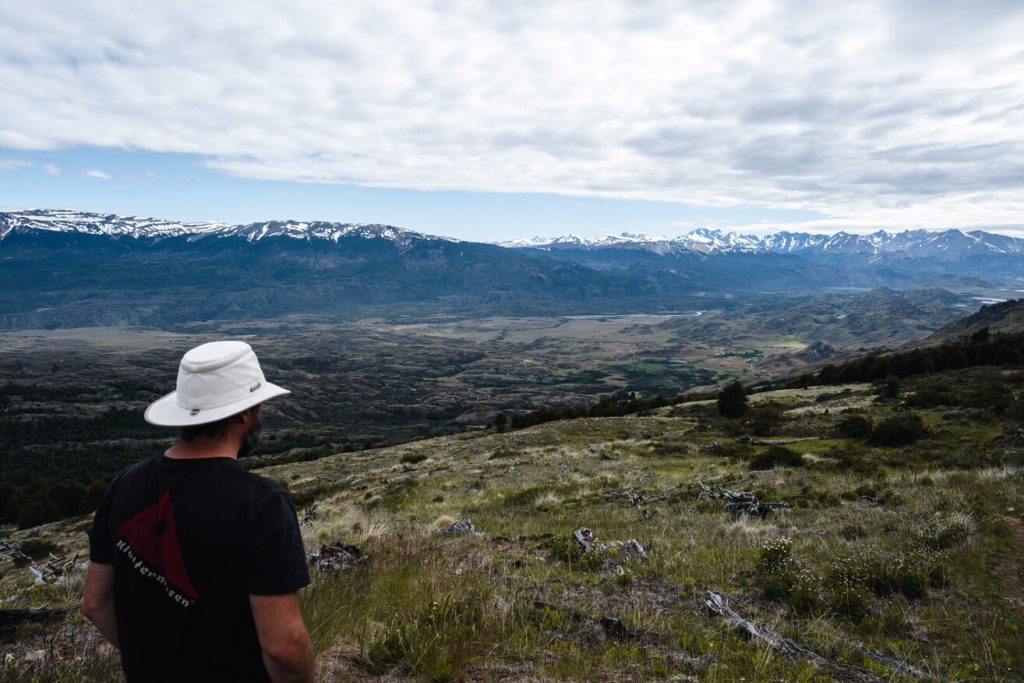
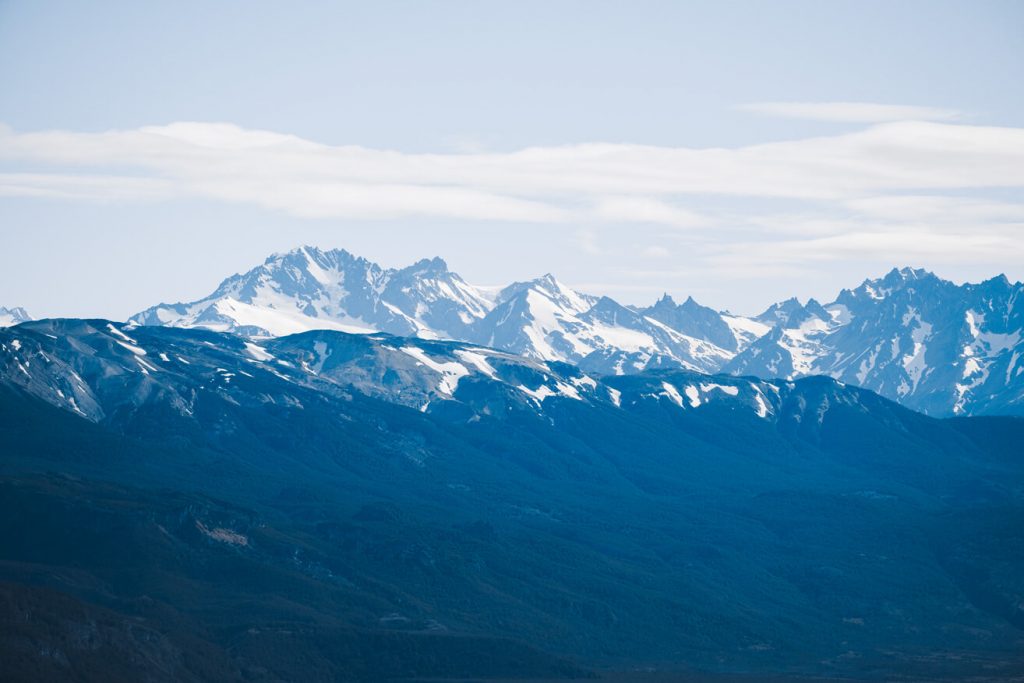
Section 2: 5.8 kilometers along Laguna Altas
Upon reaching the plateau, the hike continues gently undulating past several picturesque lagoons. The first of these lagoons proves to be the most incomparably beautiful for us. With breathtaking vistas over the majestic Chacabuco Valley, the national park, and the snow-capped peaks of the mountains, this section invites well-deserved breaks at many points. Here, in this pristine nature, it feels as if time stands still, allowing you to fully enjoy the beauty of the surrounding landscape.
Especially in the second half, we encounter guanacos grazing among the trees, often accompanying us with their curious glances. Open stretches with fascinating views alternate here with short paths through the forest, providing welcome shelter from the blazing sun.
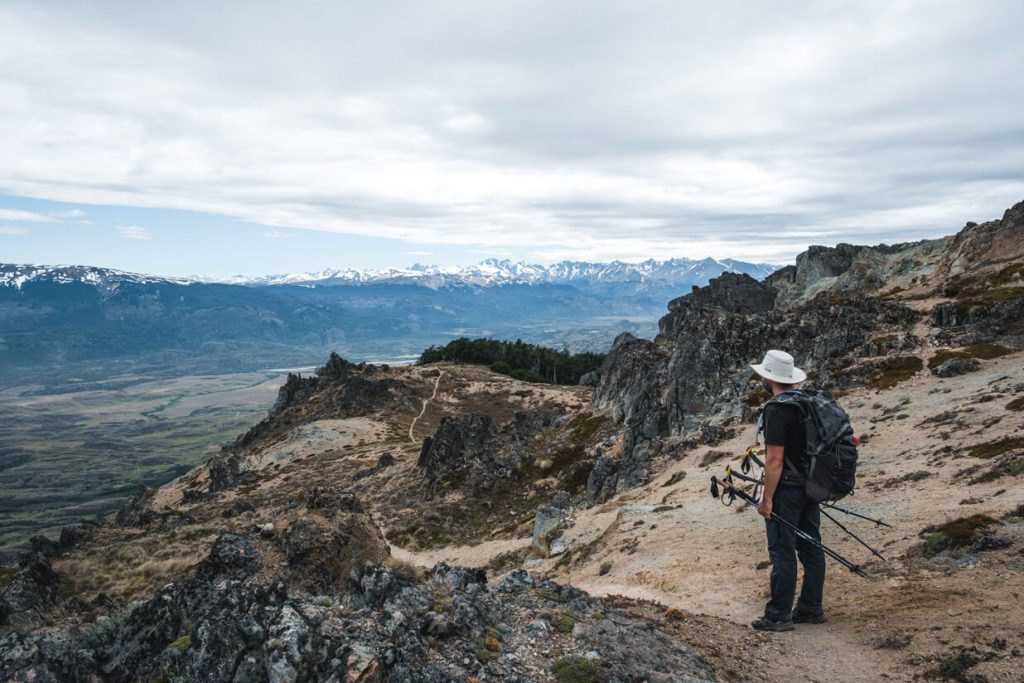
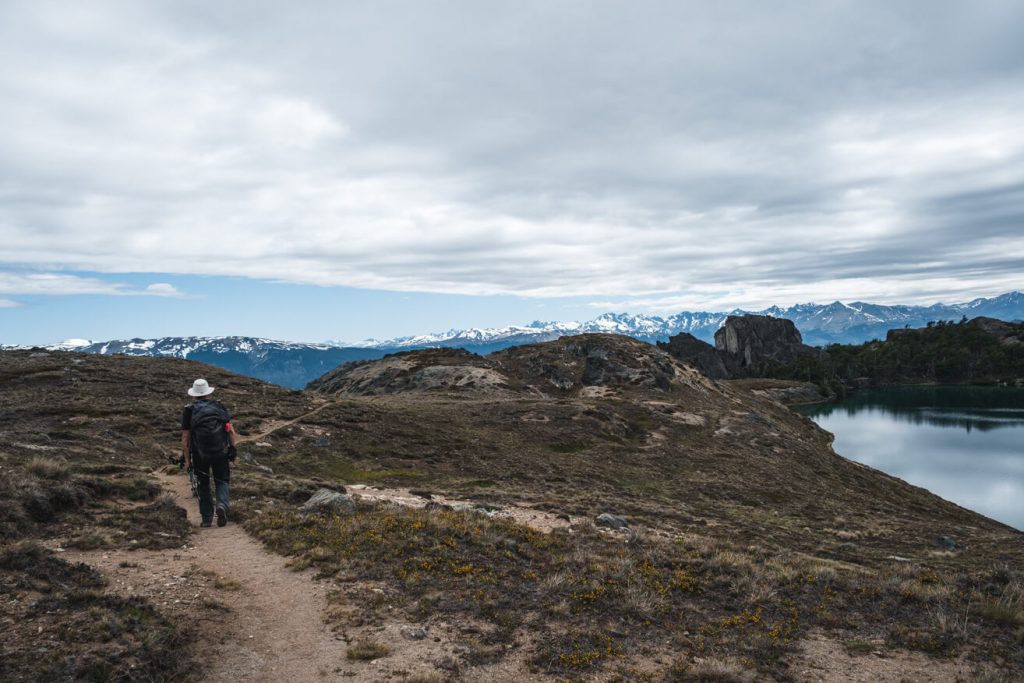
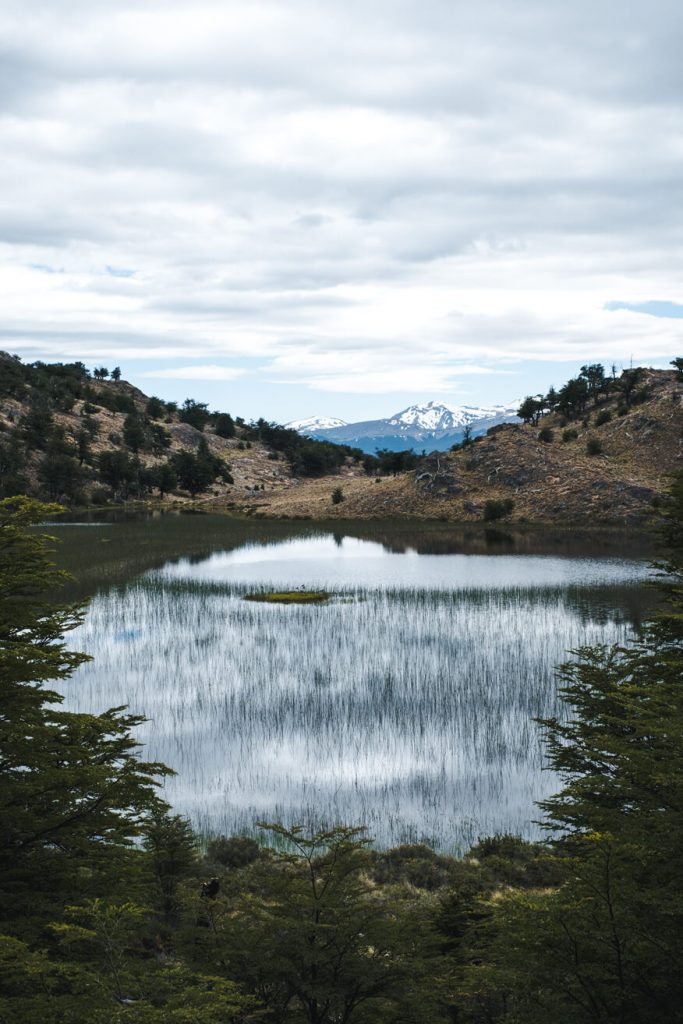
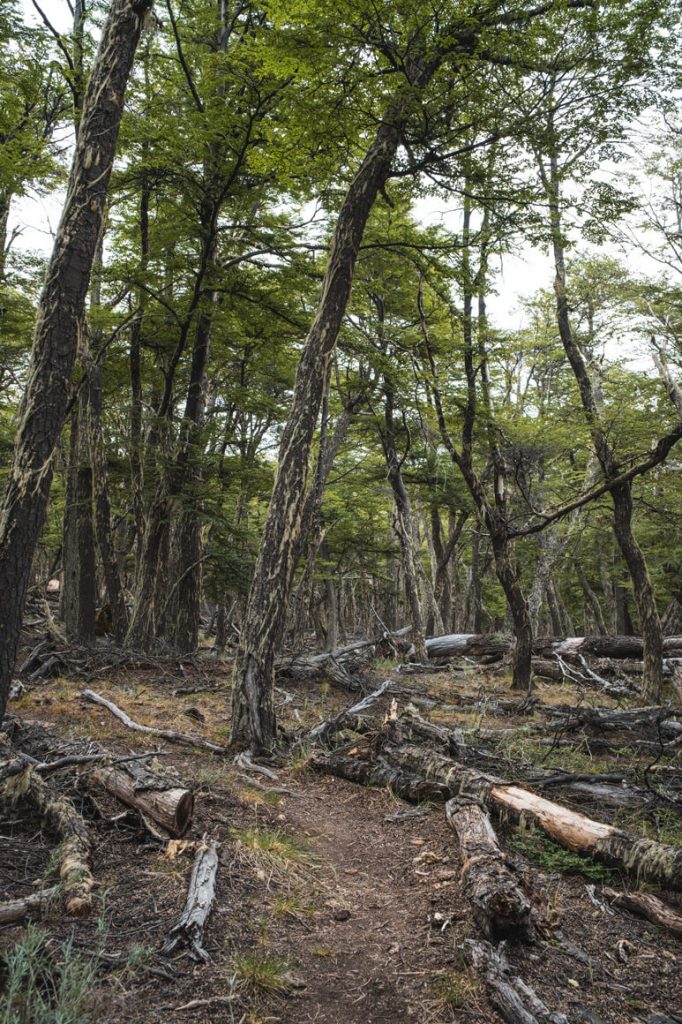
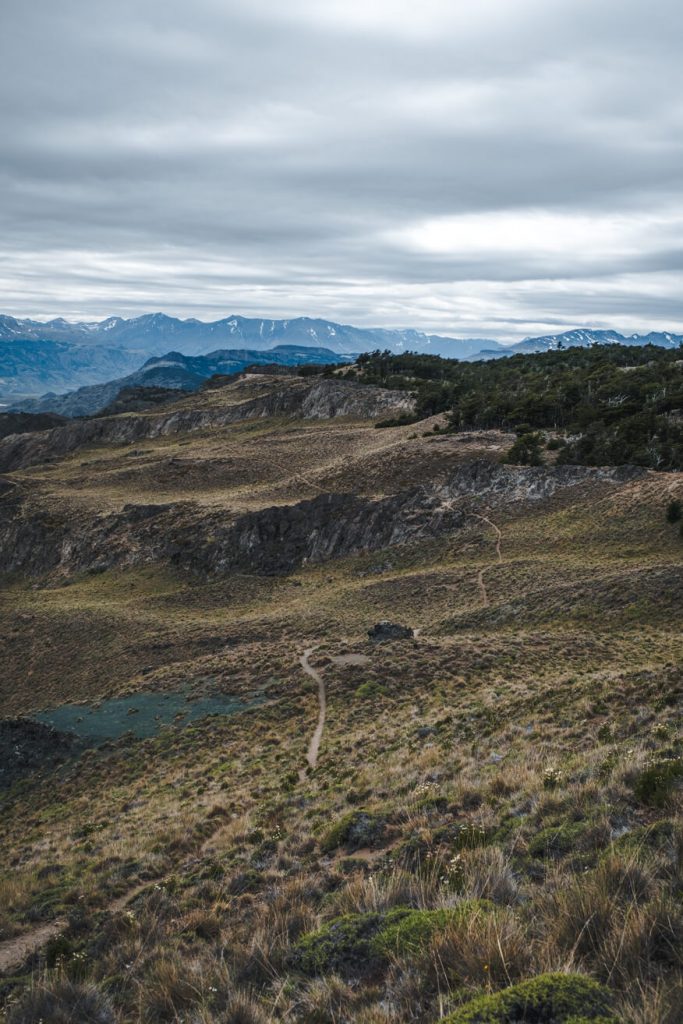
Section 3: 7.5 kilometers descent into the valley
I'm grateful that the descent is spread over the last 7.5 kilometers. It's good for my old knee injury and significantly helps me walk the 20 kilometers pain-free. The descent takes us below the plateau where we previously walked along the lagoons, heading back down the mountain. Most of the trail passes through open terrain, so we don't have to miss out on the views on this stretch either.
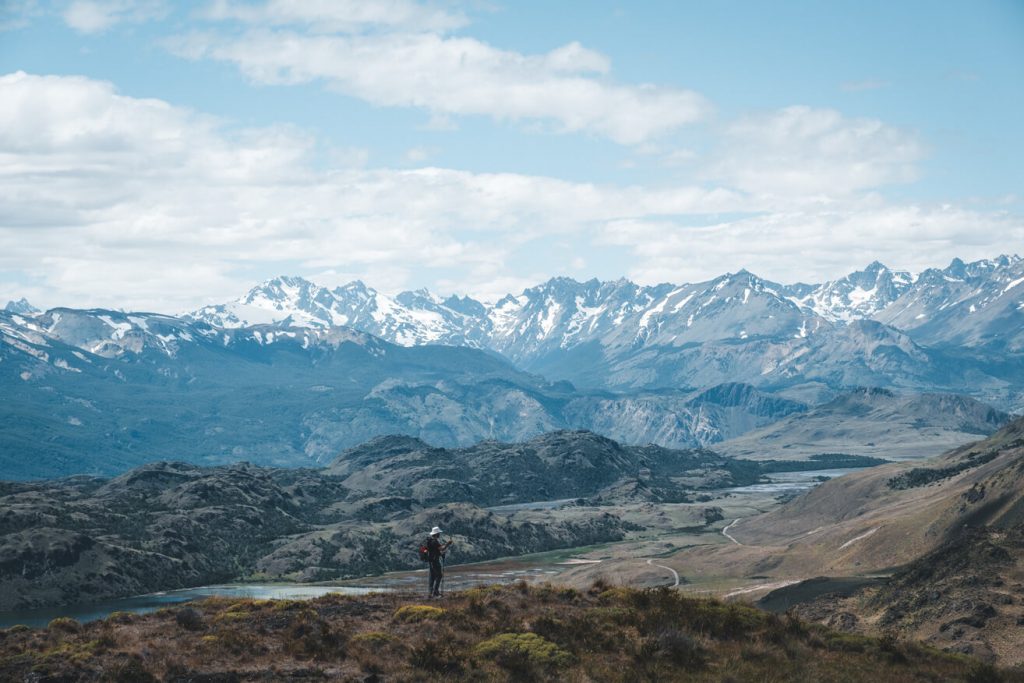
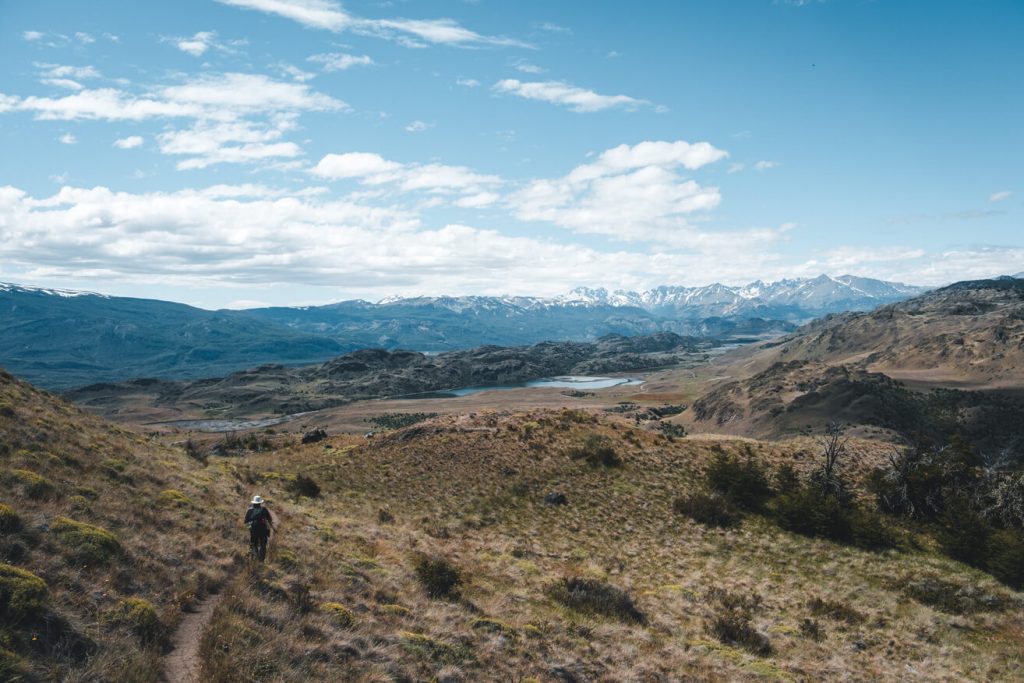
Accommodation in Patagonia National Park
There are a total of 3 campsites in Parque Patagonia, Chile. These are primarily designed for tents. If you arrive with a camper, you will need to stay in the parking area. Showers and toilets are available, however.
The campground closest to the starting point of the Lagunas Altas hike is the campground "Lost West Winds". Simply follow the signs from the visitor center. It's about 2 kilometers from there to the campground. The site offers ample space for tents. There are clean toilets and showers available. The showers are heated with solar power, so cold showers may be necessary in bad weather. Several covered areas with tables and benches are provided. Please remember to take your own trash with you when you leave.
Food in Patagonia National Park
Before traveling to the park, plan how much food you will need. There is a café and a restaurant at the visitor center, but these are the only options for food in the park. Therefore, plan to bring enough provisions.

